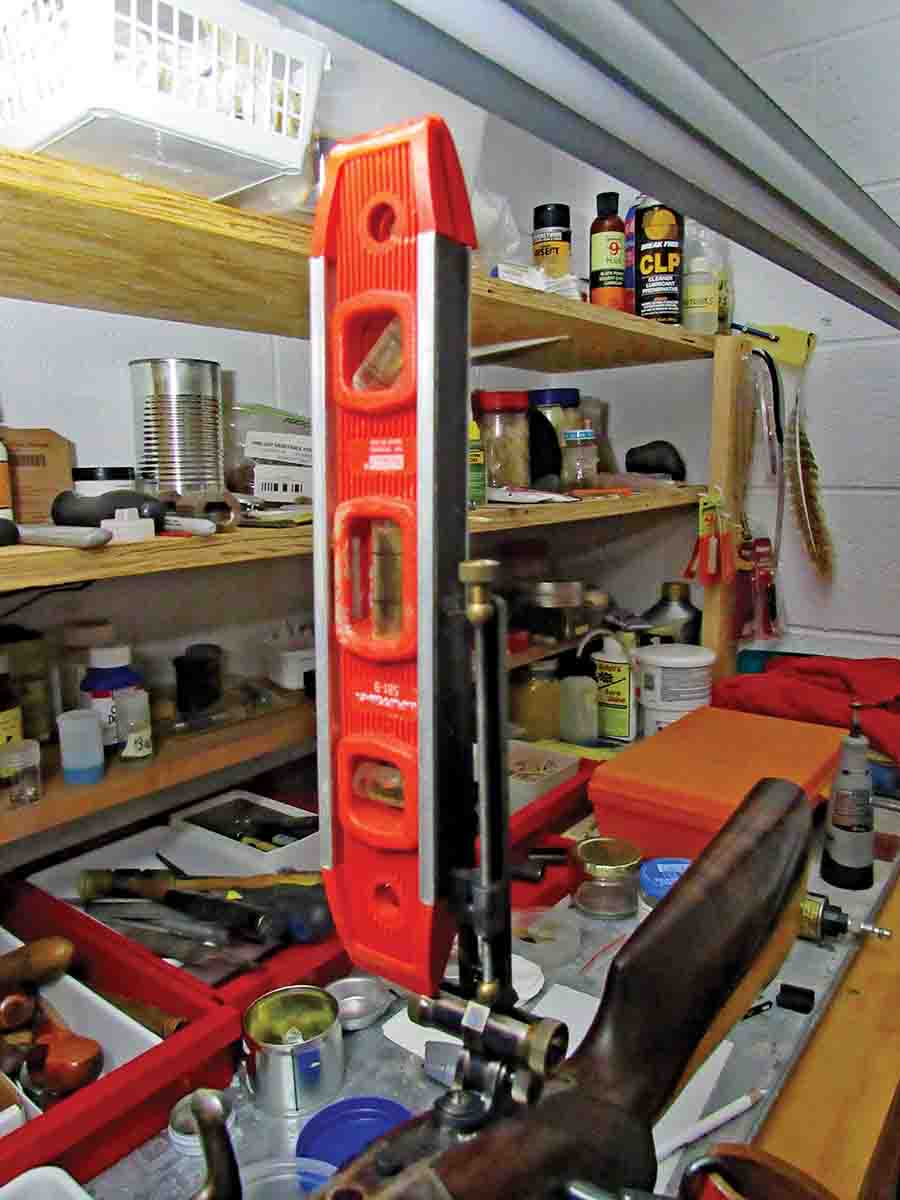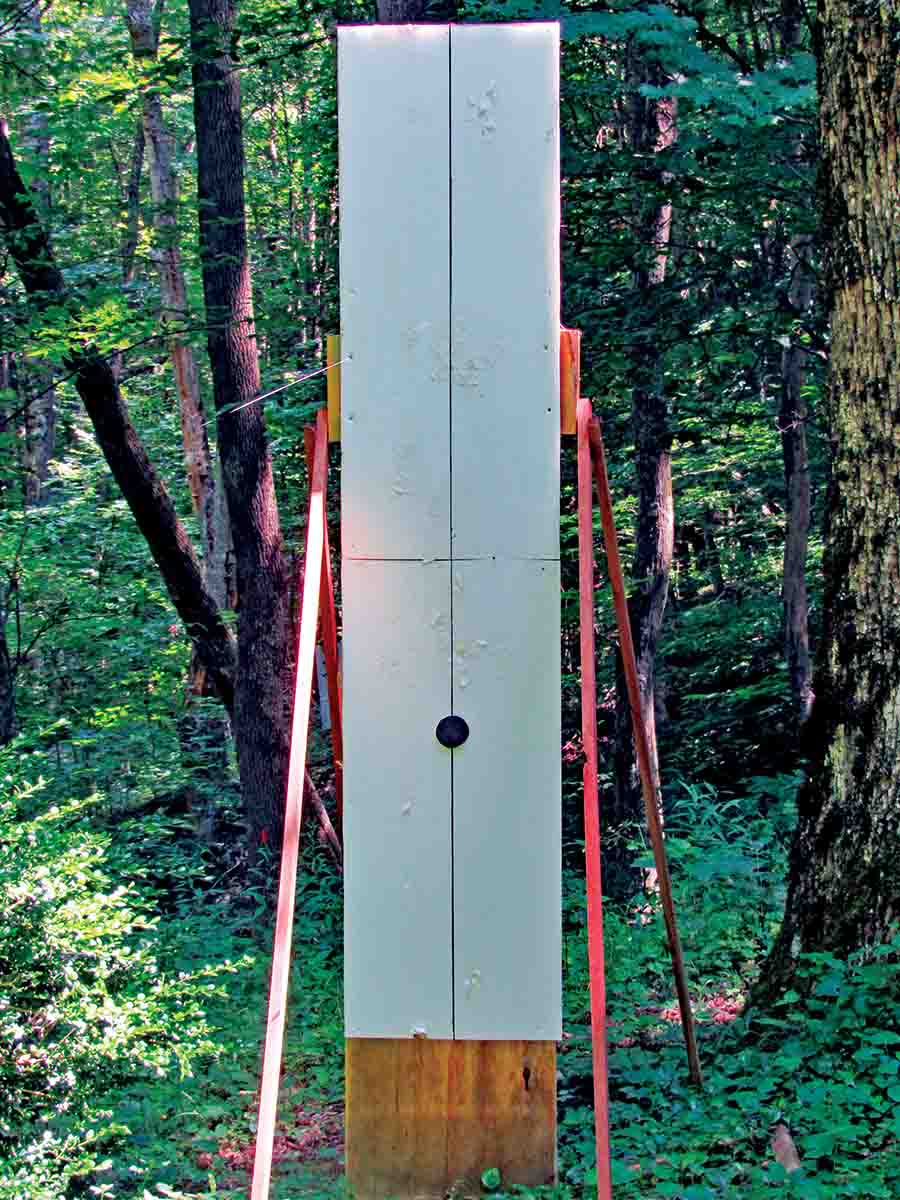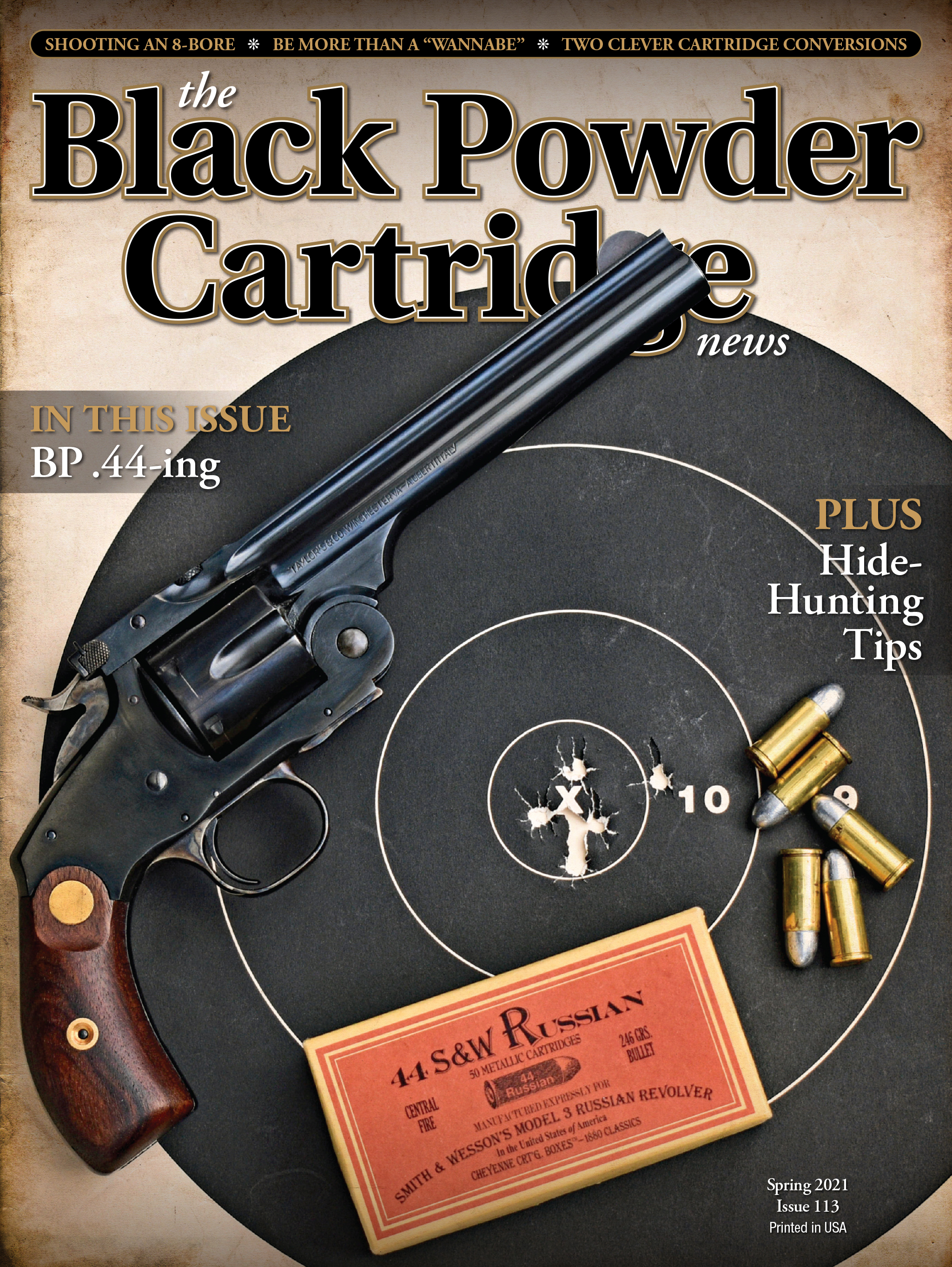Be More Than a "Wannabe"
feature By: Ed Decker | February, 21

I will be writing a series of articles in The Black Powder Cartridge News and each article will build on the next in an effort to help those who are just getting started in long-range muzzleloading shooting, as well as those who are more experienced, but would like to get better. Much of this series could apply to cartridge shooters as well, in principle.
I am 81 years old and a native of East Tennessee. My grandfather taught me how to shoot when I was 12 years old. He built my first rifle, a black powder rifle, in his blacksmith shop on Hampton Creek in Roan Mountain. On occasion, he would build rifles for other people. He called them “hog rifles.” He had no electricity and everything was done by hand. He started with picking out a maple tree, pulling it to his shop with a mule, quartering the log with a maul and wedges, then he laid the pieces on the rafters of his blacksmith shop to cure for about three years. I called him “Big Dad,” a self-sufficient mountain man who served in World War I in the Meuse Argonne Offensive in France as a sniper.
I was a member of the Third Army Rifle and Pistol Team for nine years and was pretty good with an M1 Garand. My military occupational specialty was also a sniper. During that period of time, I would visit Big Dad and he always wanted a match. I never beat him; even when his hand would shake, it became steady when he shot. If you could cover my shots with a nickel, you could cover his with a dime. I grew up in Knoxville and my home range was the Volunteer Rifle and Pistol Club, an old training range for the military, going back into the late 1800s, and early 1900s. The 1,000-yard range was on my property and I used it in the late 1950s. Later, I became a member of Oak Ridge and attended a lot of high power matches there.
Thirty or more years went by before I got hooked on black powder. I read in a newsletter about a black powder match at Oak Ridge, shooting 1,000 yards. I said, “Bull…I’ve got to see this.” That’s where I met Joe Hepsworth, a gun dealer from Newark, Ohio. As I observed the match, a gentleman named Karl Kuehn saw me and said, “I’m done, would you like to shoot this thing?” Karl loaded his original Alex Henry rifle and I laid down to shoot my first time with a muzzleloader at 1,000 yards. He said, “Target down.” It came up with a dead center bullseye. He asked, “Do you want to shoot again?” I said, “No, I might miss the entire target next time.” Several months later at Friendship, Indiana, as I was observing some shooting, here comes my wife Arleen, with Joe Hepsworth. She said, “All you have talked about for months is shooting 1,000 yards with a muzzleloader at Oak Ridge. Go with Joe, he has everything you need to get started.” I followed Joe to his pickup and left with a new Pedersoli Gibbs and all that is required to shoot it. Dan Bredberg and Mike Hulva, range officers, showed me how to load and clean, and I was on my way. By the way, I found out a year later that I didn’t have a dead center bullseye at Oak Ridge…they pulled the target and marked it that way. Karl later admitted to me, “We have hooked a lot of people that way.”
Now, to the real purpose of this article. I went through a lot of months trying to master the Pedersoli rifle and my scores were always near the bottom of the list. But finally, I began to move up the ladder until I was consistent and began to share the top scores with some of the best. One of my mentors told me, “I shouldn’t have taught you so well; now you are beating me.”
I want to begin by helping individuals who are just getting started with muzzleloading, or who are not doing too well and want to improve. If you will follow this series, eventually we will get to the point where hopefully your scores will be towards the top.
Lesson No. 1

Second, you must own an extremely accurate rifle and have a stable bullet design.
You may say, “How can I tell if I have an accurate rifle or a stable bullet design?” Shooting at short range will tell you a lot. Starting out at 200 yards, you can’t learn a thing; too much can happen between you and your target. Set your target at 50 yards. Before you even start shooting, place your rifle in a vise. Get your spirit level leveled in the vise and use a small level to check and see if your rear sight is plumb.
You may have to shim the base on one side or the other, or some people file down the base to accomplish the same thing. I would shim. The next step is to make sure the cant on your rear sight is correct and set to give you a good, clear sight picture. Move the rear sight forward or backward as you look through your sights, then tighten the adjustment screw. Next, you need a good target approximately 24 inches wide and 72 inches tall. The main reason for the tall target is because some rear sights can’t go below 200 or 300 yards, and there are other advantages as well. Once you have some 300, 500, 600 or even 900 and 1,000 yard settings, you can practice on a tall target at short range, setting your sights at these yardages, and learn a lot. Use a white background and mount on a sturdy frame and place the target at 50 yards. Plumb the target front to back. Once the target is set, draw a plumb line from top to bottom with a black marker. Make a round aim point (black) that fits your front aperture, leaving a reasonable amount of white showing in your aperture. Place this aiming point close to where you think you will line up on the target, with the plumb line running through the center. Attach it so the aiming point can be moved if necessary.
Get yourself in position and shoot five shots. Consistent position is most important. Place the butt of the rifle as high as you can in your shoulder in a wrinkle-free pocket so it doesn’t slip during recoil. Make sure your rifle is in the same position in your shoulder every time you shoot. Anchor your cheek on the stock in the same place every time. Pull the rifle into your shoulder (using the pistol grip) with your trigger hand to be firm, but do not overdo it. Keep your trigger finger on the trigger guard until you’re ready to squeeze the trigger. Your other arm should be extended and relaxed with the palm of your hand under the forearm and resting on a rest, using a bench to shoot from. After each five-shot string, adjust your front sight/rear sight until your shots are hitting on the plumb line and your rear/front sight is on zero. You are not trying to hit your aim point. The goal is to put five shots all touching and exactly on the plumb line with the rear/front sights on zero. You can move sights up to hit in a different spot, or paste holes and shoot again. If you can’t put all five shots touching and on the plumb line at 50 yards, you have problems and we can go from there, only changing one thing at a time. If you wish, you can take a photo and email it to me and I will see if I can help. We won’t go to the next step until you have mastered the first step.
Just go do it and send me some close-up group shots to onceuponatimetwo@gmail.com. I would shoot 75 to 80 grains of 1½ or 2Fg Swiss powder, with a 530 to 550-grain bullet, grease-grooved or paper-patched. This exercise should tell me three things: position, rifle, and bullet quality – as long as you squeeze the trigger and don’t jerk it.
See you in the next issue of The Black Powder Cartridge News.


